Korum’s innovative grub feeders are a must-have when fishing the maggot feeder rig for various coarse species. I have used them myself for a while now and decided to write this in-depth and honest Korum grub feeder review.
Both the Korum swivel and inline grub feeder are really effective when fishing the maggot feeder rig. The smaller swivel feeder works best on the lighter feeder rod, while the heavier inline feeder works wonderfully on the specialist rod.
Keep reading this article if you want to find out more about these awesome maggot feeders and how to best fish them for species like roach, rudd, bream, tench and carp.
Korum Swivel Grub Feeder
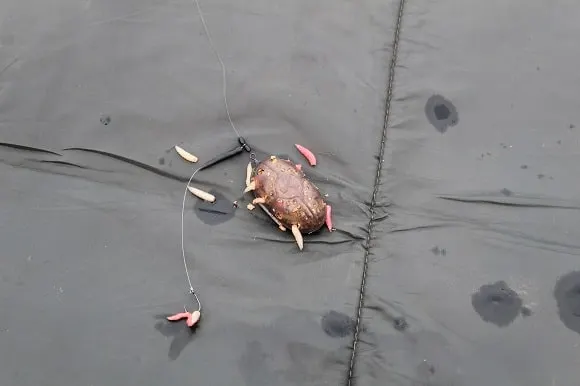
The Korum grub swivel feeder comes in a 30g standard size which is perfect when fishing for roach, rudd, bream and tench on the lighter feeder rod.
Here are some of this feeder’s most important features:
- flat-bottomed for a perfect presentation on the bottom
- strong swivel
- durable plastic case
- feeder holes aren’t too big (makes that maggots crawl out slowly)
- case is easily opened and closed with a small clip
The clip solution that Korum has found here is especially clever. It allows you to quickly open your feeder, load it with fresh maggots and close it up again, saving you valuable time during your session.
The swivel grub feeder’s shape is rather aero-dynamic, which makes it easy to cast out. It’ll always fly the way it should and land on the water surface perfectly.
I have found that the best way of rigging this feeder is to tie it directly onto your mainline and to fish your rig helicopter-style just above it.
As you can see in the picture above, my maggot feeder rig is simplicity itself! All you need is 2 line stops and a small swivel that is trapped between them.
Onto that swivel, you tie a short 4-6lb fluorocarbon hook length of about 2-3 inches and a #10-#16 hook. (size depends on your target species). Make sure to also thread on a short anti-tangle sleeve to keep the hook away from the feeder when casting out.
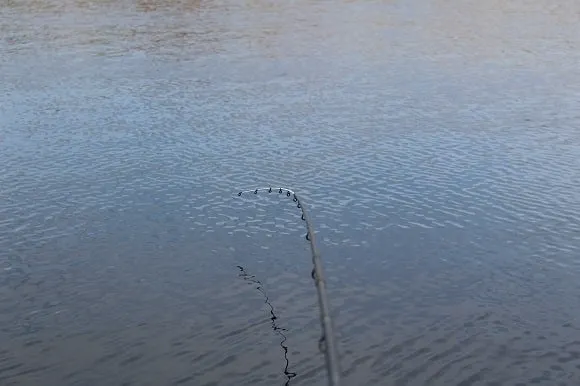
Thanks to the rather short hook length, the fish will almost always bolt itself against the grub feeder’s weight, resulting in far more bites and landed fish.
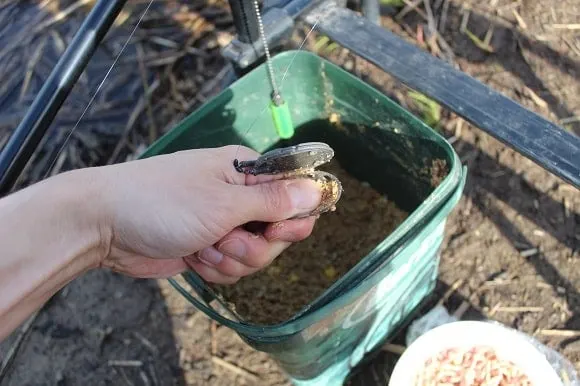
Pro Tip: Put a small portion of groundbait in your grub feeder before putting in your maggots. The groundbait will seal the holes of the feeder, which will slow down the feed and keep the maggots inside for longer.
This is especially effective when fishing in cold water, as you will want to avoid overfeeding the fish. I have checked the time it took for the feeder to be completely empty and it actually took the maggots several minutes to crawl out.
You can purchase the Korum swivel grub feeder on Amazon here
Korum Inline Grub Feeder
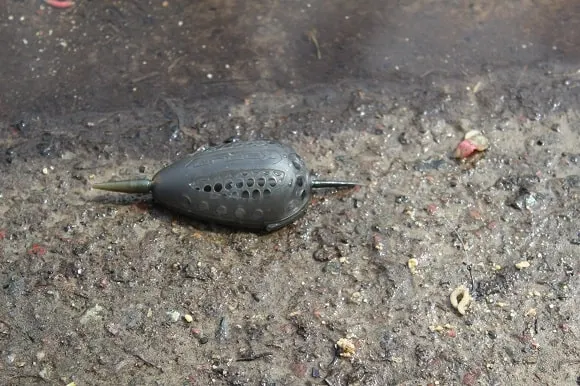
The Korum inline grub feeder comes in two different sizes; 30g and 45g. Both work extremely well when fishing for bigger coarse species, such as tench, barbel and carp on the specialist rod.
Here are some of this feeder’s best features:
- green colour for great camouflage on the bottom
- tight cone that sits well on the opening
- durable plastic case with holes of various sizes
- perfectly flat bottom that positions the feeder of the bottom perfectly
- big feeder that can hold a lot of groundbait and/or maggots (even the 30g size)
I think the inline grub feeder’s size and loading capacity is really its biggest strength, as you can fit a lot of maggots in it! This feature comes in handy if you target big specimen tench or smaller carp, as they demand a lot of feed in the swim.
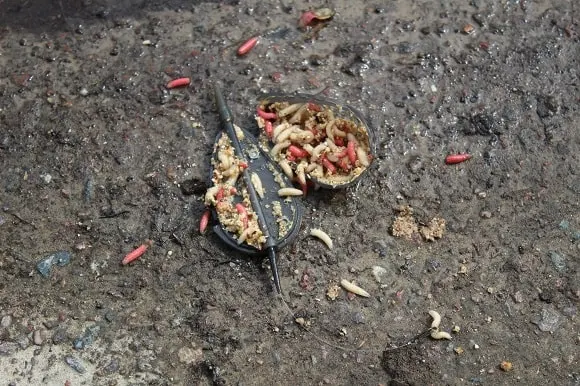
And so, as you can load up your feeder with so many maggots, and can comfortably squeeze in a portion of groundbait as well, you don’t have to reload and recast as often, as this tends to spook the fish that are already in your swim at times.
Once again, I recommend using a simple rig in combination with the Korum inline grub feeder. As the bolt effect will do most of the job for you when it comes to hooking the fish, all you really need is a small swivel that connects your mainline with your hooklink.
The rig itself should consist of an anti-tangle sleeve that you put above your swivel and a 3-4 inch 6lb fluorocarbon hook length tied to a #8-#12 wide gape hook.

Now, when it comes to your actual hookbait, you can use both live maggots directly on the hook, or a few fake maggots that you either put on the hook itself or on a short hair.
As the hook length is once again quite short, both ways actually produce a lot of hooked fish, but if the fishing is slow and you are getting a lot of nibbles, I’d go for 2-3 fake maggots on the hair!
As always, it’s all about testing!
Grab a few Korum inline grub feeders on Amazon right here
Final Thoughts
I hope that you’ve enjoyed reading this review article and that found it helpful. My intention with Strike & Catch is always to provide you, dear reader, with the best and most informative content on gear and tackle in order to help you improve your fishing and catch more fish.
Coarse fishing is so much fun and it’s so rewarding! As is sharing my experiences and tips with you. It is that very combination that is my biggest motivation and that keeps me going, article after article!
Tight lines!


Leave a comment